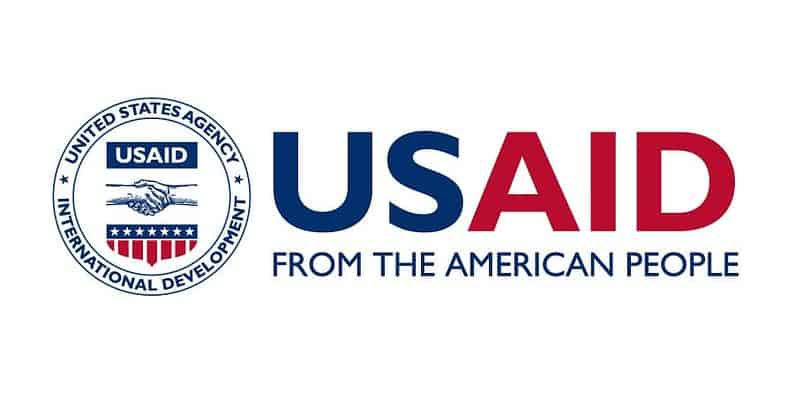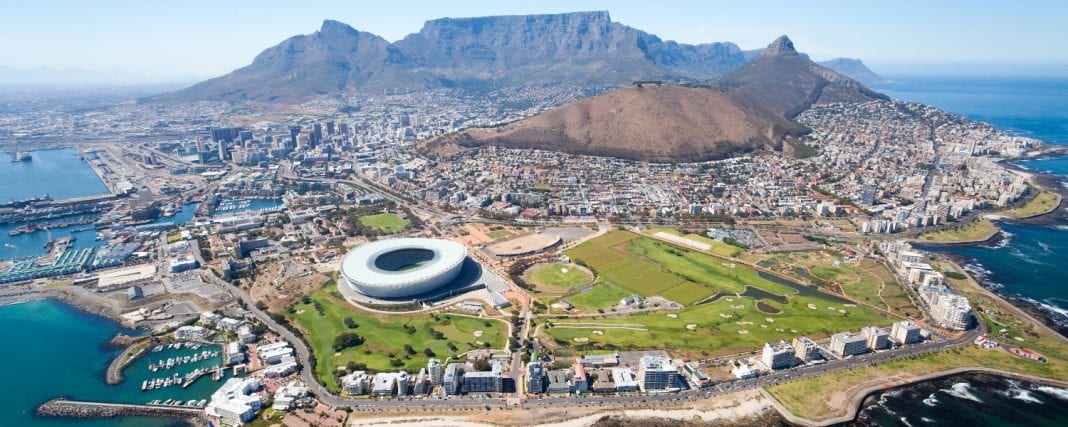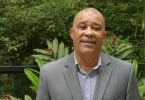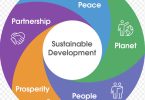GOSPOD. CAPEHART: Začnimo veliko sliko. Kako in na kakšen način podnebne spremembe nesorazmerno prizadenejo ženske?
POOBLASTILO ADMINISTRATORJA: No, najprej naj se zahvalim tistim, ki pripravljate ta dogodek.
In samo recite, da je to moja 10. generalna skupščina ZN – ne, moja 11. generalna skupščina ZN in to je prvič, da sem bil na takem dogodku, ki se samo osredotoča na glavni vir številnih težav in veliko nujnost v smislu rešitev .
Zato bi najprej rekel, da podnebne spremembe nesorazmerno prizadenejo ženske, tako kot vse marginalizirane osebe, vse ranljive skupine prebivalstva. To vidimo v manjšinskih skupnostih v tej državi vedno znova. Vidimo, da se to dogaja po vsem svetu.
Če pogledate dejanske stopnje žrtev ali smrtnosti v naravnih nesrečah, vidite ženske in otroke, ki nosijo glavno breme. In morda si mislite, oh, no, to je biološka razlika in morda ne morejo prehiteti plimskih valov ali karkoli drugega.
Vendar gre v veliki meri za spolne norme in naj bo tako, občutek, kot da potrebujete dovoljenje, da veste, ali lahko odidete in ostanete ujeti v domovih. Na splošno je to, da smo pravzaprav odgovorni za toliko v smislu blaginje družine. In spet ne biti v položaju, da bi lastno blaginjo postavili zelo v ospredje.
To vidite iz dneva v dan, ranljivosti, ko voda usiha, in pravkar sem bil na toliko mestih – prepričan sem, da ste tudi mnogi od vas –, kjer je iz leta v leto tako hudo, kako pokrajine so drugačne od tistih pred desetimi leti. Toda ena stvar se ni toliko spremenila, to je norma, da so ženske tiste, ki gredo zbirat vodo v podeželskih skupnostih, tako da ko voda usahne v bližini skupnosti, morajo ženske hoditi dlje in dlje.
In to je bil seveda grozen način ali pot, po kateri so bile ženske na poti nenehno izpostavljene nasilju na podlagi spola. Torej dlje kot greš, manj zaščite imaš, bolj se zdi, da imajo tiste druge norme, ki niso na videz, toliko opraviti s podnebnimi spremembami same po sebi – norma, ki nakazuje, da je v redu napadati ali napadati žensko – ta norma se nato preseka in tako spet pomeni različen vpliv na ženske v tem sektorju.
GOSPOD. CAPEHART: Kje na svetu so torej ta vprašanja najbolj pereča?
POOBLASTILO ADMINISTRATORJA: No, težko je izbrati. Na kratko vam bom predstavil moj nedavni horizont ali karkoli že je zaostala različica horizonta.
V zadnjem letu sem potoval v Pakistan, ko je bila tretjina države pod vodo zaradi kombinacije deževja brez primere in talečih se ledenikov – ki so trčili naenkrat – ter neustreznih priprav in infrastrukture. In spet, ženske so pogosto zadnje, ki ostanejo, da zaščitijo lastnino, da zaščitijo živino, medtem ko moški gredo iskat pomoč. Mislim, vsi so prizadeti na strašne načine.
Od tam nato potujem v severno Kenijo in v Somalijo, da vidim pet zaporednih neuspešnih deževnih obdobij. Torej popolno nasprotje tistega, kar sem videl v Pakistanu, ki je samo izsušena dežela. Zaradi suše na Afriškem rogu je poginilo na milijone živine. Morda mislite, da bo glavni učinek na pastirje, ki so seveda ljudje, ki redijo živino.
In seveda ste dejansko videli velik porast samomorov teh moških, ker so tisočletja redili živali in nenadoma so bile njihove celotne črede koz ali kamel kar tako izbrisane.
Ko pa gre za obvladovanje posledic za družine in hude akutne podhranjenosti, s katero so ostali mladi, zlasti otroci, mlajši od petih let, so bile ženske tiste, ki so se morale ukvarjati z malodušnimi možmi, ukvarjati se z vprašanjem, kaj se bo zgodilo s sinovi, ki so imeli so si predstavljali, da se ta način življenja nadaljuje in zdaj nenadoma razmišljajo: "Kako naj jim omogočim alternativno življenje, alternativno poklicanost," hkrati pa so tudi v položaju, da poskušajo najti hrano za najmlajše.
Torej spet mislim, da zadene na različnih mestih. Pravkar sem bil, zadnje, kar vam ponujam, je, da sem bil ravno na Fidžiju.
In seveda, za vse pacifiške otoke – to so skoraj vsi – je to eksistencialna grožnja.
Gre za to, da morajo cele narodnosti čez nekaj let ugotoviti, kam se bodo preselile, kaj bodo delale, na primer, ali lahko živijo v delih države, zlasti na otokih, ki so tako nizko ležeči.
In samo majhni primeri z rastočo industrijo, kjer so ženske.
V tem primeru sem srečal žensko s skupino žensk, ki so gojile morsko grozdje – ki je, mimogrede, okusno.
Še nikoli nisem jedel morskega grozdja. In bili so tako ponosni na svoje morsko grozdje. In USAID jih poskuša podpreti, pridobiti mikroposojilo, da bi lahko zgradili svoje podjetje, povečali svoje podjetje.
Ampak samo mimogrede, in tukaj se podnebne spremembe pojavljajo na vsakem koraku.
Pravijo, no, edina težava v teh dneh je ta, da moramo svoje čolne peljati vedno dlje, ker se ocean segreva še posebej blizu obale, zato moramo iti dlje. Zato gremo dlje, da dobimo svoje morsko grozdje, kar pomeni veliko dlje stran od vseh drugih obveznosti, ki jih imamo kot ženske v gospodinjstvu.
Poleg tega uporabljamo čolne, ki jih poganja gorivo, zato spuščamo več emisij v zrak, ko gremo in poskušamo pridobiti to morsko grozdje, da bi povečali naše podjetje.
Torej, veste, še enkrat, kamor koli pogledate, pacifiški otoki, Afrika, Azija – to so skupnosti, ki se obdajajo.
GOSPOD. CAPEHART: Želim priti do vaših omenjenih mikroposojil, želim priti do pomoči, ki jo daje USAID. Toda ali so te težave, o katerih pravkar govorite, večinoma v svetu v razvoju, toda ali je to, o čemer govorimo, omejeno na svet v razvoju?
POOBLASTILO ADMINISTRATORJA: Ne, komaj, ampak slučajno se mi zgodi –
GOSPOD. CAPEHART: Temu se reče vodilno vprašanje.
POOBLASTILO ADMINISTRATORJA: Mislim, živimo – mislim, da smo v naši triindvajseti naravni nesreči, ki je trenutno v ZDA stala več kot milijardo dolarjev.
Doživeli smo najtoplejši dan, teden in mesec doslej, mislim, da samo v zadnjih nekaj mesecih. Prvič smo morali zapreti nekatera podjetja, poletne tabore in priložnosti za mlade zaradi dima gozdnih požarov, ki se je razširil v naša življenja.
In spet različni vplivi. To je morda majhen primer, toda ko otrok ne more iti v tabor, bo zaposlena mama – v večini gospodinjstev, vsekakor moje – morala ugotoviti, kaj – to je kot različica tega, kar se je zgodilo. s COVID.
Ko podnebje prizadene, ne glede na to, ali gre za majhne ali kratkotrajne posledice, ki bodo resno vplivale na zdravje in življenjski slog, bodo morali to obvladati večopravilni delavci doma.
Ampak, mislim, tudi samih finančnih učinkov škode, ki se zdaj povzroča v nekaterih delih Združenih držav skoraj vsak dan, ni mogoče preceniti.
Zgodi se, da to ni tisto, na čemer dela USAID, ker svoje delo opravljamo v tujini.
In naše delo, rekel bom, je ena največjih napetosti in izzivov, s katerimi se spopadamo, to, da so nam dani fiksni viri in viri, ki nikakor ne dohajajo razvojnih zastojev, ki jih povzročajo podnebne spremembe.
Čeprav rastejo, naši viri rastejo. Ampak preprosto ne moreš dohajati. Druga težava pa ni samo to. Gre za to, da je toliko naših sredstev namenjenih ohranjanju ljudi pri življenju v izrednih razmerah, kot so bile tiste v Libiji prejšnji teden – ali tiste, ki sem jih omenil v Pakistanu ali Somaliji.
In česar ne bi storili, je, da bi vzeli vso to humanitarno pomoč in jo namesto tega vložili v infrastrukturo, odporno na nesreče, ali v semena, odporna na sušo, ali v tista mikroposojila malim kmetom, ki so dejansko sposobni uporabljati svoje pametne telefone za predvidevanje ekstremnih vremenskih dogodkov in vsaj omiliti te izgube.
Torej – to, kar sem opisal, je nekako razlika med odpornostjo in nujno pomočjo. Kot vlada in donatorska skupnost smo zelo obremenjeni – mislim, čudovita stvar je, čudovit privilegij poskušati pomagati ljudem preživeti najhujše trenutke v življenju.
Toda če to počnete na ta način, kar je precejšnja vmesna vrzel, veste, da se boste temu vrnili. In to je še posebej srce parajoče.
Ker se je včasih reklo, rekli bi podnebni šok, zdaj pa je nekako tako, ali je šok, ko je to predvidljiva značilnost določenega dela kmetijskega življenja v državi? In kaj torej to zahteva od nas?
Če bi bila pita večja, bi dramatično povečali naše naložbe v odpornost, kar bi morali storiti. Težko je ne reševati življenj v interesu dolgoročnega reševanja življenj. Zato to uravnovešamo, kolikor lahko. Vendar to ni zabavno ravnotežje.
GOSPOD. CAPEHART: Predvidevali ste vprašanje, ki sem ga nameraval postaviti, ko sem preskočil del o mikroposojilih, zato bom skočil naprej. Pogovorimo se o razmerju med gospodarskim razvojem in podnebnimi spremembami.
Kako tesno sta ti vprašanji povezani in kako USAID obravnava obe hkrati?
POOBLASTILO ADMINISTRATORJA: No, mislim, rekel bi, da smo ali se gibljemo proti, naj povem, ker nas čaka še dolga pot, da bi posvetili pozornost podnebnim spremembam kot oblikovalsko značilnost vsega našega dela.
Ena vrsta strukturnega, morda čudnega primera tega je, da smo vzeli naš Urad za varnost hrane in odpornost in ga združili z našo ekipo za podnebje. In tu je torej – a povezava, ki je ljudem povsem očitna, ni popolno prekrivanje, a obstaja na tone – je kmetijstvo glavni vir emisij, zato je treba te emisije zmanjšati.
In seveda, podnebno pametno kmetijstvo bo način, kako ohraniti prehransko varnost ali jo povečati v prihodnjih letih. Torej je to ena združitev. Toda po izobrazbi je številka ena. Mislim, vsi mi, vsi, ki imamo otroke, je najpomembnejša stvar, ki jo otroci želijo vedeti o nas, ne samo, kaj se bo zgodilo s svetom, ki ga jaz poznam, ampak tudi, kaj lahko glede tega naredim?
Torej celo razmišljanje o izobraževanju v upravljanju – to je tako bistveno destabilizirajoče za vlade, ki ne morejo slediti podnebnim spremembam, bodisi na strani odpornosti bodisi na strani izrednih razmer, ker povečuje to izgubo zaupanja v institucije, ki jo vidimo v tako marsikje po svetu.
Ne gre samo za izvoz nadzornih tehnologij, saj veste, iz LRK ali demokracije, ki je napadena z drugimi sredstvi.
V svetu se dogajajo tudi stvari, ki jih vlada, ko jim ne more slediti, poveča ta cinizem glede institucij. To je dolg način za reči, da pri USAID opravljamo delo upravljanja, izobražujemo, skrbimo za javno zdravje, ki je popolnoma povezano s podnebjem.
Ko pogledate spreminjajoče se vzorce malarije, mislim, da WHO napoveduje, da bo do leta 250,000 umrlo dodatnih 2030 ljudi zaradi podnebnih sprememb – bodisi zaradi vročinskega stresa, malarije ali pomanjkanja vode, podhranjenosti, ki izhaja iz tega.
Kot agencija moramo torej v vse, kar počnemo, pozornost posvetiti odpornosti in pozornosti podnebnim spremembam ter temu, kaj to pomeni za skupnost.
In a sense, USAID is a climate agency, even if we still have a climate team that works as a climate team per se, mainstreaming this agenda is what our missions are trying to do all around the world.
And this is not because I anticipate the, you know, the concerns of some maybe in our domestic politics on this – and I’m sure you’ll get there, but this isn’t USAID foisting anything.
This is the cri de coeur for you know, heard all around the world, that this is a game changer. Our development trajectories were going here – COVID hit and now we have what could feel like a COVID-like, not not of the same scale, but battering again and again and again.
So just as we’re now thinking differently about pandemic prevention, what should that lead us to think about when it comes to embedding climate in the mindset of all public spending and all notions of mobilizing, mobilizing private capital, because that’s, of course, going to be a big part of the solution.
So we’re that’s – it’s this mainstreaming and not having climate live over here. But given that it is this game changer and given it’s our host countries and the communities in which we work and of it works. It’s John F. Kennedy’s pleading gives us more of the tools to adapt to this shell-shocking phenomenon.
GOSPOD. CAPEHART: Well, I asked the question about economic development because, with economic development comes perhaps better lives, and better living conditions, which then can exacerbate the issues related to climate change.
So how do you – and I wrote it down really fast – that mainstreaming, how in mainstreaming climate in the things that you do. How do you find that balance between helping people help themselves, while at the same time not doing it in a way that exacerbates the climate problems that we all have to face?
POOBLASTILO ADMINISTRATORJA: Yeah, and I mean, I think one example I think that you’re alluding to is, you know, as people get richer, they buy more meat and that causes, you know, more emissions or they travel more, they’re flying more there.
And absolutely, I mean, we’ve seen that the emissions trajectory in both the PRC and India reflected that.
Our emissions trajectory, back as we were bringing our economy online and modernizing, absolutely reflects that. So I think that is profound. I will say the fact that solar power, the cost of solar has come down by 85 percent. The cost of wind is down by 55 percent. Where we work, the demand signal for renewables is very, very significant – which doesn’t get it mediating some of the other features of getting wealthier.
But it does get to the urgency of making clean energy transitions as these prices come down. It is a better bet. And so again, when we have these exchanges on the Hill and it looks to some who are skeptical somehow still of climate programming, you know, that we’re bringing our green agenda to the countries in the communities we’re working in – no, it’s not like that at all.
They’re saying we can’t afford this other thing.
But actually, we can pop up a solar panel and have a water pump that we’ve been trying to get in this village. We can go off the grid in ways we never – where the state is not going to get here any time soon.
This was my experience out in Bekaa Valley in Lebanon, where USAID had worked to, you know, build a bunch of solar panels that powered electricity and ended up actually reducing tension between refugees who were being generously sheltered by Lebanese host communities, Syrian refugees, and the Lebanese.
Because they were no longer fighting over water because they had water because they had solar – but to attach to the grid, no way. And so then those tensions, who knows what would happen with that.
So the idea is that these investments are cost-effective over time, that actually you can develop, along the lines of what you’re describing, in a clean way.
I think the other aspects of consumption need to be dealt with as part of civic education and as part of norm work because it is true that in many, many societies, and again, including our own back in the day, as you increase your livelihoods, your income, consumables are a very attractive way to expand those new resources.
This feels like a high-class problem in most of the countries we’re talking about. I mean, I’m talking about working with small-scale farmers who are paying double this year for fertilizer than they were paying before Putin invaded Ukraine, who just need a little loan to be able to get access to some of those drought-resistant seeds that are going to increase yields by 25 percent.
But again, finding the resources to get them that. Getting the private sector interested in adaptation. But the question that we should be thinking now about, if we can be successful, if we can help them withstand the negative effects of climate change and the like here in America, grow jobs out of also these changes to their economies, then what?
Then we will be grappling with the kinds of things that have further fueled emissions in more recently developed countries.
GOSPOD. CAPEHART: As you alluded to many times, there’s a lot of good news related to the development of clean energy alternatives. That being said, though, global emissions once again hit a record high in 2022, and carbon dioxide in the atmosphere has risen to levels not seen in millions of years. Are we moving in the wrong direction despite glimmers of hope?
POOBLASTILO ADMINISTRATORJA: Well, I mean, I think all of us can answer that question in two ways. And we talk to ourselves all day – on the one hand this, and on the other hand that. But what we can say is we’re certainly not moving fast enough. And you know what breaks my heart is, it’s a little bit like another version of the vicious cycle you were kind of describing.
But when you see the wildfires, and the rate of wildfires, and then all of the carbon emitted and all of the good that had been done with carbon emission reductions – and that being not washed away – whatever, smoked away, burned away – that’s heartbreaking because these investments are accelerating.
They are building momentum. So I think that, and that’s not the only thing that’s heartbreaking.
There’s so much that’s happening day to day and a little bit of the despondency, I think, setting in as well – as people just open the newspaper, and whether it’s in their own community or one further afield or even something like what happened in Libya, which just captures the imagination of, which was its own sui generis issue with regard to governance and infrastructure, but would not have happened that way but for the intensity of Storm Daniel, which is just being seen in so many communities.
But what I do think it’s important to come back to, at least as proof of concept, is that in Paris the projections – they were, we the world, were on a track to warm 4 degrees and we are now on a track to warm 2.5 degrees.
So that is a reflection of the agency that people have claimed over this trajectory. The problem is we need to curb warming at 1.5 degrees, but that delta from four to 2.5 should give people at least a sense that actually collectively we are doing things that are making a difference. There’s no doubt we are doing things that are making a difference.
If I could, though, I think the area that we have – I mean, as John Kerry likes to say, if we don’t get mitigation right and the carbon reductions right, there’ll be no planet to adapt. He makes a comment like that a lot.
We, at USAID, are in the mitigation and adaptation business, as is Secretary Kerry and his team. But I think in mitigation, what I think gives one hope is just how much the private sector has leaped in now recognizing that there’s money to be made. And I’d love to rely on people’s good intentions and their feeling of fellow humanity, but it’s much more reliable if they think there’s money to be made.
And that shift has occurred. And you see it in the IRA, which is already defying even the best projections and extrapolations that people did. I mean, this is going to have way more collateral effects and bring down carbon way more, I think, than people could have, just strictly speaking, anticipated because of a cascade now of private sector interest fueled and catalyzed by the underlying legislation.
And so too, as the prices come down again, there’s a virtuous cycle. Adaptation – we’re not we’re not there. And I don’t know if we’re ten years behind where we are on mitigation – where we are on mitigation.
Like it’s the same thing going to happen in ten years where we look back and say, oh, we lost all that time. Why couldn’t private-sector actors have seen as well that there’s good to be done and money to be made?
I guess if you have to think that way around the insurance industry in the agricultural sector, in Fintech, I mean, all these tools are going to be absolutely critical in particularly rural areas and those areas that are most vulnerable to climate change.
But about two percent of funding for adaptation comes from the private sector right now, and that has just got to change.
So President Biden and we have done a big call to action to the private sector, but it’s slow going. And even if you take – forget the specific sectors that have a direct nexus with the need to build resilience – look at it in even more stark terms. The market share that so many companies are hoping to capture is themselves going to have less money to spend, maybe in flight, maybe at war.
And so the positive of that is, hey, if we can help them adapt and be more resilient and where these emergencies happen, but don’t wallop communities in the same way and they bounce back, those are consumers that will be our consumers. But the negative is what if, you know, millions, tens of millions of consumers are taken offline because they are driven into poverty?
The predictions now are that 100 million more people driven into extreme poverty by 2030. But that’s within our hand, that adaptation. There’s so much less to, as I would say to my kids, there’s room to grow.
The areas that are the most troubling in some ways, there’s really room to grow. And you could see a cascade of the kind that we’ve seen on carbon mitigation.
GOSPOD. CAPEHART: Administrator Power, we got a minute and eight seconds and this will be the final question. The name of this conference is This is Climate: Women Leading the Charge. So how do you see women reshaping climate leadership?
POOBLASTILO ADMINISTRATORJA: We, USAID, and Amazon, the company, not the forest, launched a gender equality fund, a gender equity fund at COP, and we launched it with $6 million in funding. And this is for women.
It’s for projects that will benefit women, it’s for projects that are driven by women in adaptation or in mitigation – the whole or the protection of natural ecosystems – but things broadly in the climate space.
And today we have the Visa Foundation and Reckitt, a company out of the United Kingdom, who have joined us and matched that initial – USAID put in $3 million, Amazon put in $3 million, and have added $6 million.
Why do I mention this? It’s not a huge amount of money yet. We are going to get up to $60 million, we hope, in rapid order.
This is part of another cascade that we would like to see. We’ve put out a request for proposals, incredible women leaders are putting proposals in.
These can be small projects. A lot of the climate finance right now is not going to small projects, it’s going to big international organizations. So working more with local partners is going to be absolutely key.
But these are going to be the success stories that are going to inspire people to invest more and to believe that change can come. And sadly, there are just not that many examples of climate finance facilities that are targeted and tailored toward women, even though women are bearing the greatest brunt.
And women, I think, in my experience, are doing the most innovative work in dealing with the consequences of climate change and trying to lower those consequences in the years ahead.
GOSPOD. CAPEHART: Samantha Power, the 19th Administrator of USAID, thank you very much for joining us today.
POOBLASTILO ADMINISTRATORJA: Thanks, Jonathan.
What is USAID?
USAID stands for the United States Agency for International Development. It is an independent agency of the United States federal government that is primarily responsible for administering civilian foreign aid and development assistance. USAID’s mission is to promote economic and social development in countries around the world, with a particular focus on reducing poverty, promoting democracy, and addressing global challenges such as public health crises, environmental sustainability, and humanitarian crises.
Some of the key functions and activities of USAID include:
- Providing humanitarian assistance: USAID responds to natural disasters, conflicts, and other emergencies by providing humanitarian aid, including food, shelter, and medical supplies, to affected populations.
- Promoting economic development: USAID works to stimulate economic growth in developing countries by supporting projects and programs that create jobs, improve infrastructure, and foster private sector development.
- Supporting democracy and governance: USAID promotes democratic governance by providing technical assistance and support for fair and transparent elections, strengthening civil society organizations, and advocating for human rights and the rule of law.
- Advancing global health: USAID plays a crucial role in global health initiatives, including efforts to combat infectious diseases like HIV/AIDS, malaria, and COVID-19. It supports healthcare systems strengthening, family planning, and maternal and child health programs.
- Environmental sustainability: USAID works to address environmental challenges, including climate change and natural resource management, through projects that promote conservation, renewable energy, and sustainable agriculture.
- Education and capacity building: USAID invests in education and capacity-building programs to enhance the skills and knowledge of individuals and institutions in developing countries, thereby contributing to long-term development.
- Food security and agriculture: USAID supports programs aimed at improving food security, increasing agricultural productivity, and reducing hunger and malnutrition in vulnerable populations.
USAID operates in partnership with governments, non-governmental organizations, international organizations, and other stakeholders to achieve its development goals. It is often involved in projects and initiatives that aim to alleviate poverty, promote stability, and enhance the well-being of people in countries where it operates. The agency’s work is guided by the foreign policy objectives of the United States and the broader goal of fostering global development and progress.























